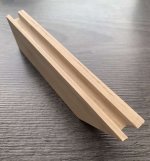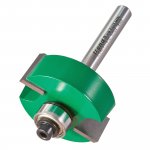keithwwalker
Member
- Joined
- Mar 8, 2023
- Messages
- 25
I'm already on the road to purchase a 1010 router for LR32 system hole drilling.
I do want a machine to slot mill (groove) pieces however. This will be a major use for the router I purchase:
The narrow edge of planks (think 1x4 and 1x6's) to take a groove for 1/8 inch plywood
Face of plywood near the edge to take a groove for 1/8 plywood (think back panel for a shelving unit)
Is there a compelling reason to have an MFK700 to do this work? Can the 1010 router do just as well for less cost? I see they take the same arbors.
Most concerned that the parallel edge attachment of the OF1010 is stable enough for running down a long length of plank and not shift.
Any help is appreciated.
What are the advantages of the MFK700? I doubt I will be doing edge banding.
Thanks
kw
I do want a machine to slot mill (groove) pieces however. This will be a major use for the router I purchase:
The narrow edge of planks (think 1x4 and 1x6's) to take a groove for 1/8 inch plywood
Face of plywood near the edge to take a groove for 1/8 plywood (think back panel for a shelving unit)
Is there a compelling reason to have an MFK700 to do this work? Can the 1010 router do just as well for less cost? I see they take the same arbors.
Most concerned that the parallel edge attachment of the OF1010 is stable enough for running down a long length of plank and not shift.
Any help is appreciated.
What are the advantages of the MFK700? I doubt I will be doing edge banding.
Thanks
kw




